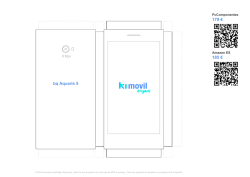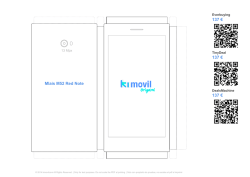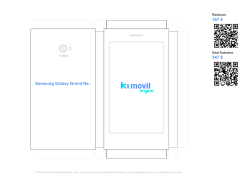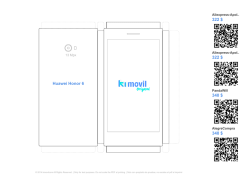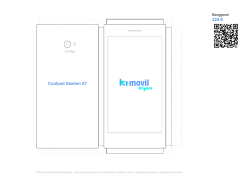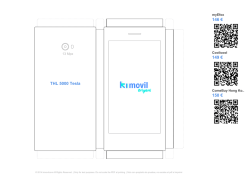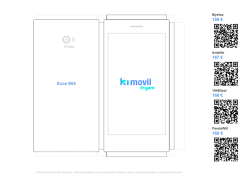
2014-04-precise-brain-response-deep-depression
Precise brain mapping can improve response to deep brain stimulation in depression 28 April 2014 The study is published online in the journal Biological Psychiatry, with the title "Defining Critical White Matter Pathways Mediating Successful Subcallosal Cingulate Deep Brain Stimulation for Treatment-Resistant Depression." "These results suggest that clinical outcome can be significantly influenced by optimally modulating the response network defined by tractography," says Patricio Riva-Posse, MD, Emory assistant professor of psychiatry and behavioral sciences and first author of the paper Experimental studies have shown that deep brain stimulation (DBS) within the subcallosal cingulate (SCC) white matter of the brain is an effective treatment for many patients with treatmentresistant depression. Response rates are between 41 percent and 64 percent across published studies to date. One of the proposed mechanisms of action is the modulation of a network of brain regions connected to the SCC. Identifying the critical connections within this network for successful antidepressant response is an important next step. A new study using MRI analysis of the white matter connections examined the architecture of this network in patients who demonstrated significant response to SCC DBS. Researchers found that all responders showed a common pattern defined by three distinct white matter bundles passing through the SCC. Non-responders did not show this pattern. "This study shows that successful DBS therapy is not due solely to local changes at the site of stimulation but also in those regions in direct communication with the SCC," says Helen Mayberg, MD, senior author of the article, professor of psychiatry, neurology and radiology and the Dorothy C. Fuqua Chair in Psychiatric Imaging and Therapeutics at Emory University School of Medicine. "Precisely delineating these white matter connections appears to be very important to a successful outcome with this procedure. From a practical point of view, these results may help us to choose the optimal contact for stimulation and eventually to better plan the surgical placement of the DBS electrodes." Led by researchers at Emory University, Case Western Reserve University and Dartmouth University, the study included 16 patients with treatment-resistant depression who previously received SCC DBS at Emory. Computerized tomography was used post-operatively to localize the DBS contacts on each electrode. The activation volumes around the active contacts were modeled for each patient. Sophisticated neuroimaging combined with computerized analysis was used to derive and visualize the specific white matter fibers affected by ongoing DBS. Therapeutic outcome was evaluated at six months and at two years. Six of the patients had responded positively to DBS at six months, and by two years these six plus six more patients responded 1/3 positively. All shared common involvement of three distinct white matter bundles: the cingulum, the forceps minor and the uncinate fasciculus. The conversion of six of the patients who were not responding at six months to being responders at two years was explained by the inclusion of all three bundles due to changes in stimulation settings. Non-responders at both six months and two years showed incomplete involvement of these three tracts. "In the past, placement of the electrode relied solely on anatomical landmarks with contact selection and stimulation parameter changes based on a trial-anderror method," says Patricio Riva-Posse, MD, Emory assistant professor of psychiatry and behavioral sciences and first author of the paper. "These results suggest that clinical outcome can be significantly influenced by optimally modulating the response network defined by tractography. This obviously will need to be tested prospectively in additional subjects here and by other teams exploring the use of this experimental treatment." This new information will allow us to develop a refined algorithm for guiding surgical implantation of electrodes and optimizing the response through fine tuning of stimulation parameters," notes Mayberg. "That said, improving anatomical precision alone doesn't account for all nonresponders, so that is an important next focus of our research." The researchers now plan to study DBS therapy in a prospective protocol of similar treatment-resistant depressed patients, using presurgical mapping of an individual patient's network structure, precisely targeting the three SCC fiber bundles, and systematically testing the stimulation contacts. Provided by Emory University APA citation: Precise brain mapping can improve response to deep brain stimulation in depression (2014, April 28) retrieved 24 June 2015 from http://medicalxpress.com/news/2014-04-precise-brain-response-deepdepression.html 2/3 This document is subject to copyright. Apart from any fair dealing for the purpose of private study or research, no part may be reproduced without the written permission. The content is provided for information purposes only. 3/3 Powered by TCPDF (www.tcpdf.org)
© Copyright 2026
